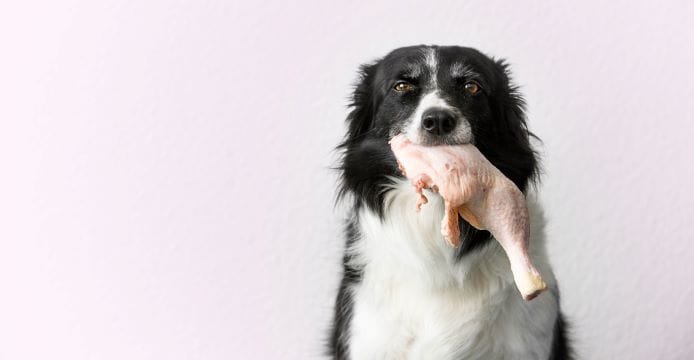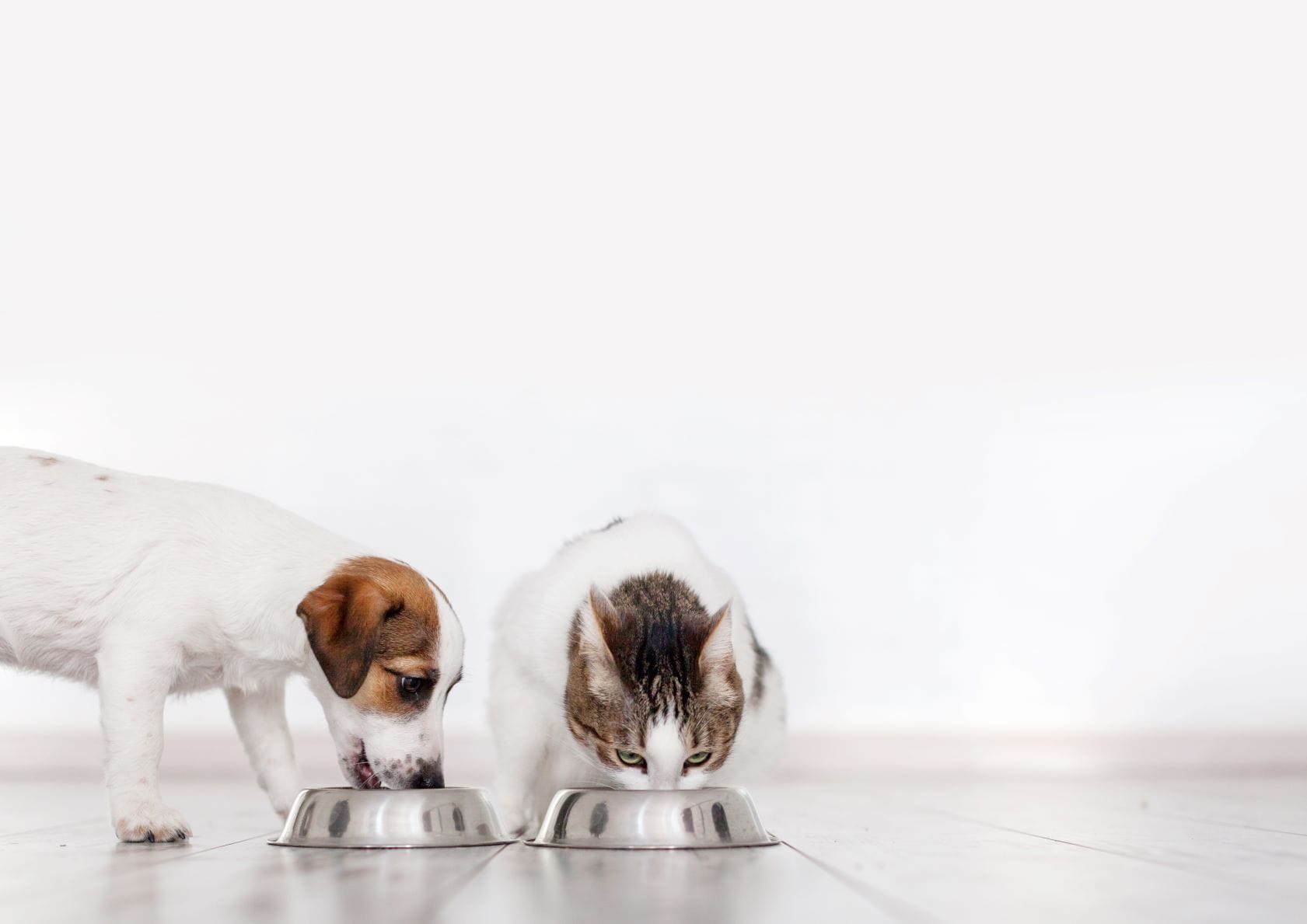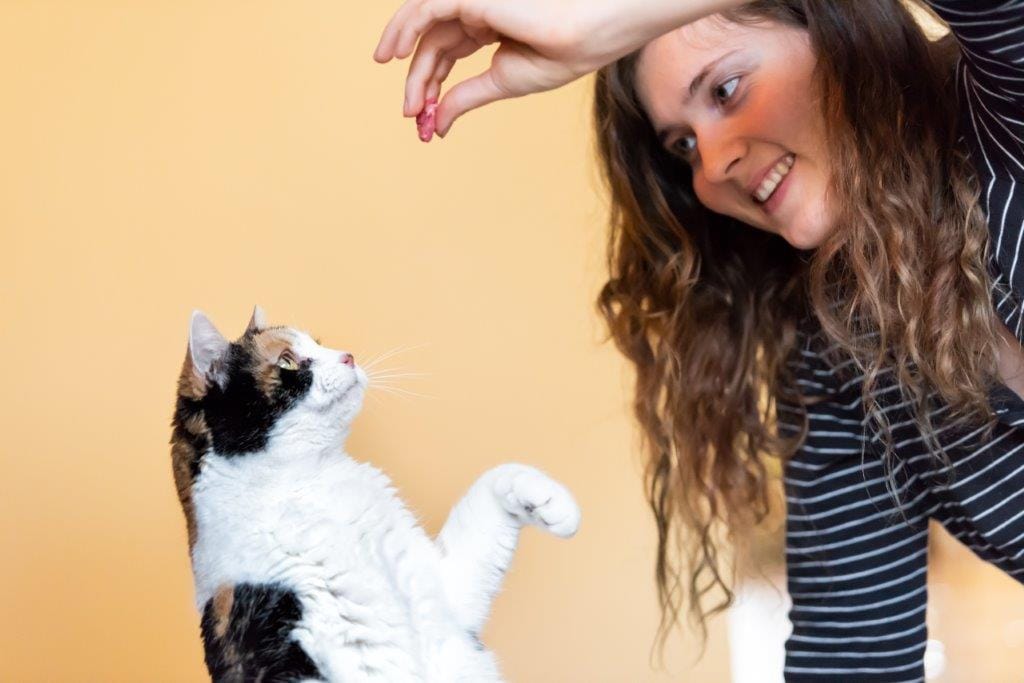
FEEDING GUIDE
Feeding Guide
SWITCHING YOUR DOG ONTO RAW FOOD
-
For most dogs transitioning to a raw food diet we suggest starting with chicken meal for the first few weeks. Chicken meal is easy to digest and low fat making it a great choice to start with. From there you can feed the chicken/beef mix for about a week to introduce beef into the diet and then adding in the beef meal and bison and turkey. From there you can start to rotate protein sources.
-
Variety is very important with a raw food diet but it's important to introduce it slowly to avoid digestive upset.
We have a new to raw starter pack that can be a great way to get started on the right track. The new to raw starter pack can be found here be sure to click on the feeding guide for further instrucitons.
-

-
HOW MUCH RAW FOOD SHOULD YOU FEED?
On average you should feed about 2% of your dog's body weight (dog's weight x 0.02). Larger dogs will generally eat proportionately less than that and small dogs will generally eat proportionately more. This is just a guideline; you should monitor your dog’s body condition on a regular basis. You should be able to easily feel ribs along your dog’s ribcage with the palm of your hand but hip bones should not protrude. Obesity in dogs can lead to several serious health issues including a higher incidence of cancer, bone disease, heart, kidney, liver problems etc. Keeping your dog thin is one of the best things you can do for their health.

HOW OFTEN SHOULD RAW FOOD BE FED?
-
Adult dogs are generally recommended to eat once a day. This allows the digestive system to fully stretch and utilize all of the glands in the digestive tract. Dogs, like wolves are designed to take on lots of food at once and then fast for a period of time. Some dogs do better eating once per day, we often reccommend once a day feeding for dogs that experience grumbly tummies, bile vomiting and other digestive issues.
-
Feeding once per day can often alleviate many of these issues. Some dogs however, do better eating twice per day.
We suggest trying both and sticking with what works best for you and your pet.
PUPPIES AND RAW FEEDING
-
Proper nutrition for puppies is extremely important! Bone disorders begin in puppyhood. Feeding a balanced raw food diet to a puppy does two very important things for their health. First it allows them to grow slowly, this is crucial to avoid bone and joint disorders. Raw food is biologically appropriate and the levels of protein, fat and calcium are suitable for their growing bones and muscles. Kibble often contains too much fat, protein and synthetic calcium. This causes fast uneven growth, and too much synthetic calcium interferes with the absorption of other essential vitamins.
It is essential to proper growth and development to feed a balanced raw food diet to puppies. All of our foods are tested by a third party lab to ensure that they are ideal for growing puppies (including large breed puppies.) Calcium content is extremely important for puppies, too much or too little can cause life long ill effects on the musculoskeletal system.
Fat and protein content are also extremely important for puppies in order to have proper organ development and function, we make sure that all of our foods fall within the ideal ranges so that you can feel confident that you are feeding your growing pup the best thing possible during this important period. Pups can switch over to a raw diet just like adults, starting with Chicken Meal and slowly adding new proteins and meaty bones to the diet. Remember slow growth is the best; everyone wants their puppy to grow the fastest and be the biggest healthiest looking puppy around. However by doing this you could be causing irreversible bone damage.
-

If people comment on how “lanky” your puppy is, take it as a compliment on what a great job you are doing growing your pup slowly. Puppies should eat between 4% and 6% of their body weight (puppy’s weight x 0.05). Alternately, you can feed 2-3% of their expected adult weight, and make sure to adjust the amount you are feeding based on the pups body condition. You should be able to easily feel your pups ribs with the palm of your hand but hip bones should not protrude.
Puppies should eat 3 times a day until they are about 6 months of age. From 6 months to about 1 year they should be fed twice daily. Once they are fully grown they can then be switched to one meal a day. Also remember that your pup’s bones are still very soft, so avoid too much exercise and any high impact activities.
We recommend feeding the meals and essentials formuals until your puppy is fully grown. The nutrtions in the fully ground meals and essentials formuals is going to be more precise than a diet of meaty bones and balancer, which is important for growing puppies.

-

-
FULL MEALS AND ESSENTIALS FORMULAS
These are designed to provide everything in one convenient package. All of our meals and essentials formuals are tested by a third party lab to ensure that they have balanced calcium/phosphorus, protein/fat and other essential nutrients, you can feel confident that you are feeding the best diet possible to your best friend.
Our meals contain 5% vegetables, fruit and few other supplements. Our essentials formuals are meat, bone, organ only. Both are great choices for dogs, the essentials formuals are the most ideal option for cats.
We reccommend alternating 4 or more protien sources for optimal nutrition. You can also feed meaty bones once or twice a week for dental health while feeding meals. If you are going to feed lots of raw meaty bones, I suggest you do a diet of Meaty Bones and Balancers (see above).
HOW TO FEED RAW MEATY BONES AND BALANCER
-
When feeding a diet that consists of meaty bones and balancers, you need to feed about half raw meaty bones and about half meat/organs/veggies. The Raw Meaty Bone Balancer is designed to be 50% of the diet, with meaty bones such as chicken bakcs/necks, turkey necks, pork hocks/necks, lamb necks, duck necks, etc making up the other 50% of the diet. You can adjust the amount of balancer vs. bones according to your dog’s specific needs; some dogs will do better with a 60/40 ratio either way.
A good way to monitor your dog’s needs is by paying attention to their stools, meaty bones tend to harden stools and meat/organs tend to soften stool.
-
You can feed meaty bones and Balancer in the same meal or alternate meals, such as bones for one meal and balancer the next. Remember to feed variety; the more protein sources you can rotate the better (once your dog has been weaned onto a raw diet). Raw feeding is all about balance over time; you can balance out nutrients and portion sizes over a week or two. Not every meal needs to be the same size or "complete."

SWITCHING YOUR CAT ONTO RAW FOOD
-

-
Cats are naturally suspicious of new foods, so be patient and realize that it may take a little time to complete the switch to a raw diet. Cats should be fed once or twice a day. If you are free feeding kibble, your first step to switching to a raw diet should be to make meal times for your cat.
Some cats will take to raw right away and some will take some convincing. Try to test your cat’s interest by placing a small amount of raw food in with their regular food. If your cat takes to it you can begin adding more until you no longer include any kibble. If your cat avoids it, try mixing a small amount of raw food in with the regular food to disguise it and gradually add more and more. If your cat doesn’t take to raw right away, be patient - this does not mean that your cat will never eat raw, it just may take some time.
Our essentials formuals are the best choice for cats as they are meat, bone, organ only. Cats are obligate carnivores and do not need fruits or vegetables in their diet. Our essentials formulas alos have a calcium content that is ideal for cats.
Once your cat is used to eating fresh, raw food you can begin to incorporate raw meaty bones like chicken wings and necks. If you feed raw meaty bones 3-4 times a week you will keep your cat’s teeth clean and healthy. Following is a link to a great site that has a lot of information about feeding cats raw and many suggestions to make the switch:
ARE THERE ANY PROBLEMS WITH BACTERIA?
-
Unless your dog or cat is severely immune compromised (in which case I suggest you seek the advice of a holistic vet) bacteria should not be a problem for them.
They have a stomach with an extremely low pH (1 or 2). This is an inhospitable environment for salmonella and other forms of bacteria.
However we humans, unlike our pets, are not designed to eat raw meat and these bacteria can be harmful to us.
-
Handle your pet’s raw food like you would handle your own. Wash your hands after contact, clean any surfaces that have come in contact with raw food, do not leave raw food out for your pet for more than an hour or two. It is best to have a designated area for your dog or cat to eat raw meaty bones, during the summer outside is great; during the winter have them stay in an area that is easy to clean, such as a mat or towel, the bathroom or their kennel. Dogs have been shown to shed salmonella in their feces, so ensure you wash your hands after cleaning up after them.




